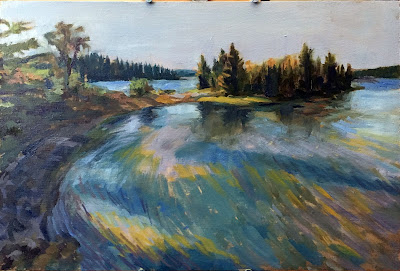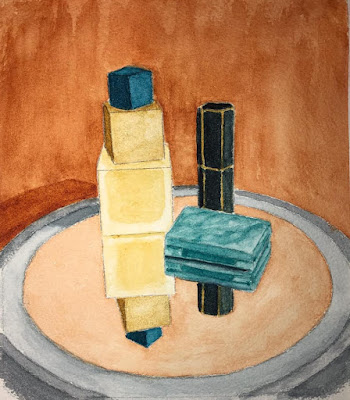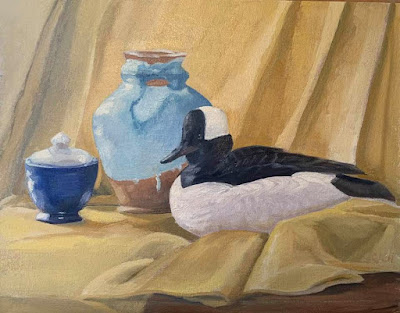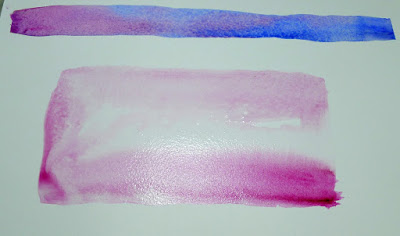This, friends, is why I’m not getting everything done!
 |
| Beautiful Dream (Rockport Harbor), 12X16, oil on canvasboard, $1449 framed. |
I’m a one-man band, which means that in addition to painting, I do all my own accounting, advertising, and vacuuming. Sometimes things slip under the rug—and I’m not talking about just the dog’s duck toy. This time it was advertising my upcoming classes in a timely manner. It didn’t occur to me until yesterday, and my next session of plein air starts tomorrow.
That’s why people will sometimes tell me, “I didn’t know you teach,” or something similar. These pieces are such a big part of my life that it boggles my mind that it didn’t even penetrate their consciousness. That is the price we pay for our divided modern existence—half on-line, half in the real world. One half doesn’t really know what the other is doing.
 |
| Balletic sway, 9X12, oil on canvasboard, $696 unframed. |
Let me run through my activities this summer and fall:
Plein air class
There are three openings left in this class. It meets on Thursdays from 10-1 AM in the Camden-Rockport-Rockland area. The dates are:
July 15, 22, 29
August 5, 19, 26
The fee for the six-week session is $210.
These classes are strictly limited to 12 people. As always, we’ll be focusing on the water, shoreline, boats, architecture, and outstanding natural beauty of this place we’re blessed to call home.
 |
| Early spring, 8X10, oil on canvasboard, $522 unframed. |
Zoom Monday evening classes
You don’t need to be in Maine to take these classes. We have students from Texas, Indiana, New York and elsewhere joining us. These are limited to 14 people per session. I can’t remember who’s told me they’re coming back, but I expect that I’ll have 3-4 openings.
We meet on Mondays from 6 to 9 PM EST, on the following dates:
July 26, August 2
August 16, 23, 30
The fee for the five-week session is $175.
 |
| Friendship, 9X12, oil on canvasboard, $696 unframed. |
Sea & Sky at Schoodic, August 8-13
This workshop is sold out (but you can emailme if you want to be wait-listed).
Age of Sail aboard schooner American Eagle, September 19-23
This workshop is also sold out (but you can email me if you want to be wait-listed).
Authentic West at Cody, Wyoming, September 5-10
Cody’s a small airport, so this workshop has run up against the national car-rental shortage. If you’re interested, contact me and we’ll try to work out a transportation solution.
Gateway to Pecos Wilderness, September 12-16
This workshop has five openings. It’s a place I especially love to teach, with all the grandeur and warmth of the west.
Red Rocks of Sedona, September 26-October 1
For this workshop, you contact the art center directly, here.
Moss-draped oaks in Tallahassee Florida
This is being organized by my friend Natalia Andreeva, so you contact her directly here.
 |
| Naturally air-conditioned! |
Open air gallery at 394 Commercial Street, Rockport, ME
Meanwhile, I’m running my open-air gallery outside my home five days a week. That’s Tuesday-Saturday, noon-6, at 394 Commercial Street, Rockport, ME
And that, friends, is why I’m not getting everything done!








































